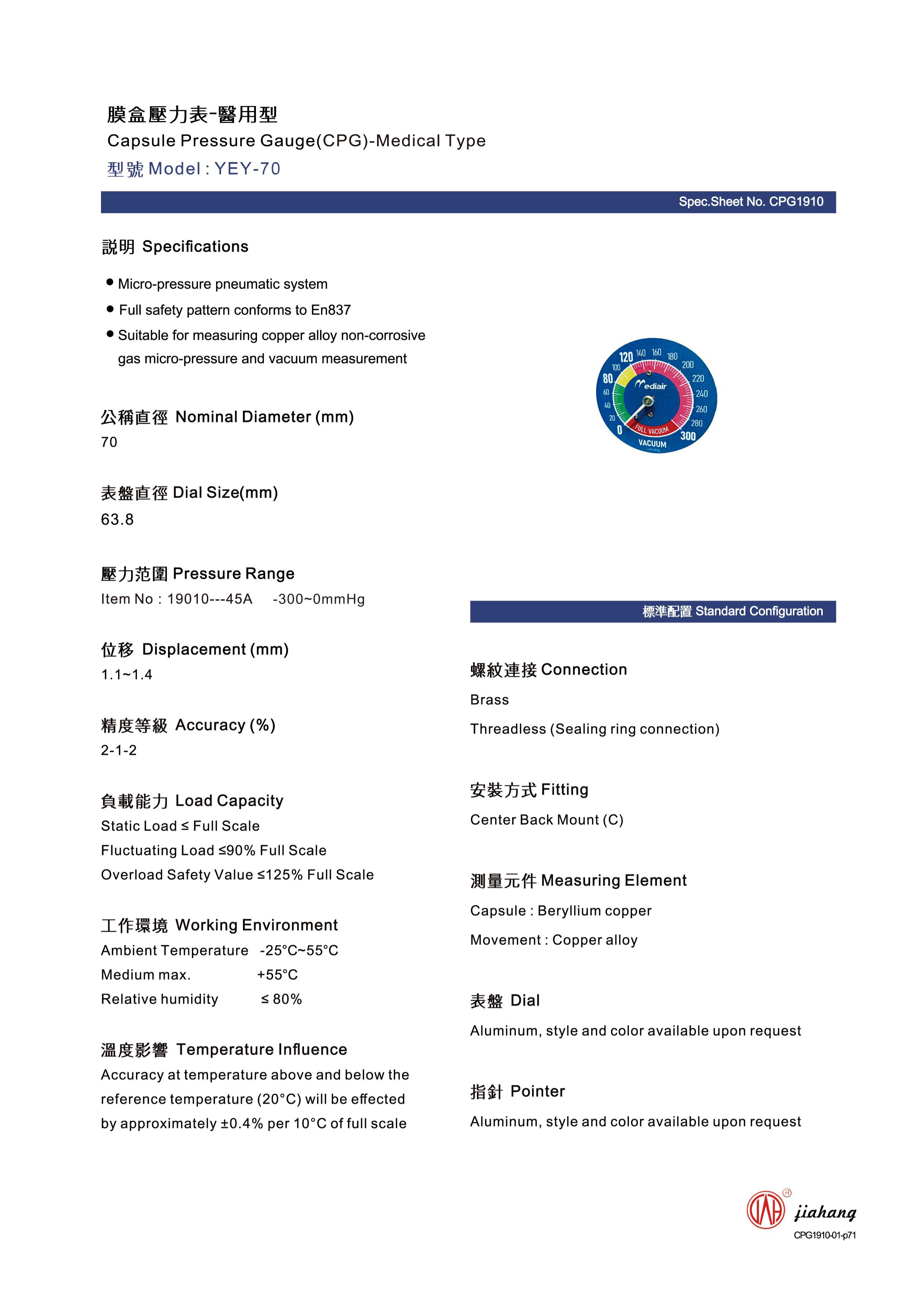
Jul . 27, 2024 22:30 Back to list
Essential Components for Custom OEM Pressure Gauge Manufacturing and Design Solutions
Understanding OEM Pressure Gauge Components
Pressure gauges are vital tools used across various industries to measure the pressure of gases and liquids. For original equipment manufacturers (OEMs), understanding the components of a pressure gauge is crucial for ensuring the quality and reliability of the final product. This article will delve into the essential components of OEM pressure gauges, highlighting their functions and significance.
1. Sensing Element
The sensing element is the heart of any pressure gauge. It converts the pressure of a fluid into a mechanical movement that can be measured. Common types of sensing elements include Bourdon tubes, diaphragm sensors, and piezoresistive sensors. The Bourdon tube is widely used due to its simplicity and reliability; it consists of a curved tube that straightens when pressure is applied, translating the motion into a dial reading. Diaphragm sensors, on the other hand, are ideal for measuring very low pressures or in corrosive environments, as they provide higher sensitivity.
Once the sensing element detects pressure, the movement mechanism translates this movement into a dial reading. The movement mechanism usually consists of gears and levers that amplify the small movements generated by the sensing element. It is critical that this mechanism is designed with precision to ensure accurate readings. Any discrepancies in the gears or levers can lead to significant errors in the gauge readings, which can be detrimental in applications where pressure accuracy is crucial.
3. Dial and Display
The dial and display are the components visible to the user and result from the gauge’s internal mechanics. A clear and accurately calibrated dial is vital for effective communication of pressure readings. It usually features a scale, marked in appropriate units (such as psi, bars, or kPa), that allows users to easily interpret the pressure measurements. Hi-visibility and proper calibration are essential for environments where immediate action might be required based on pressure changes.
oem pressure gauge components

4. Housing
The housing protects the internal components of the pressure gauge from environmental factors such as moisture, dust, and mechanical impacts. OEMs typically choose materials for the housing based on the operating environment. Stainless steel casings are often selected for corrosive environments, while plastic housings may be adequate for general use. The design of the housing also affects the gauge's durability and overall performance.
5. Connection Fittings
Pressure gauges must be attached to the system they are monitoring, which is where connection fittings come into play. These fittings ensure a secure and leak-proof connection between the gauge and the process. Common types of connections include threaded fittings, flanged connections, and weldable fittings. The choice of connection type will depend on the application, media being measured, and the industry standards that must be followed.
6. Calibration and Accuracy
Calibration is an essential process that ensures the accuracy of a pressure gauge. OEMs often have strict calibration protocols in place to guarantee that each gauge meets the necessary accuracy standards. Regular calibration is particularly vital in critical applications such as pharmaceuticals, food and beverage, and aerospace, where precision is paramount.
Conclusion
Understanding the components of OEM pressure gauges is essential for manufacturers who aim to produce reliable and high-quality measuring instruments. Each part, from the sensing element to the calibration process, plays a significant role in the overall performance of the gauge. By focusing on quality and precision in these components, OEMs can ensure that their pressure gauges meet the high standards expected in various industrial applications. Investing in the right materials and technologies will not only enhance product reliability but also increase customer trust and satisfaction.
-
High-Precision 5 Valve Manifold Differential Pressure Gauge Suppliers
NewsApr.29,2025
-
High-Precision Diaphragm Vacuum Pressure Gauges Manufacturers & Quotes
NewsApr.29,2025
-
Omega Differential Pressure Gauges High Accuracy & Durability
NewsApr.28,2025
-
Low Pressure Differential Pressure Gauges Precision Solutions & Quotes
NewsApr.28,2025
-
Digital Diaphragm Pressure Gaauge Precision Measurement & OEM Quotes
NewsApr.28,2025
-
Differential Pressure Gauge China Price High-Accuracy & Best Quotes
NewsApr.28,2025
